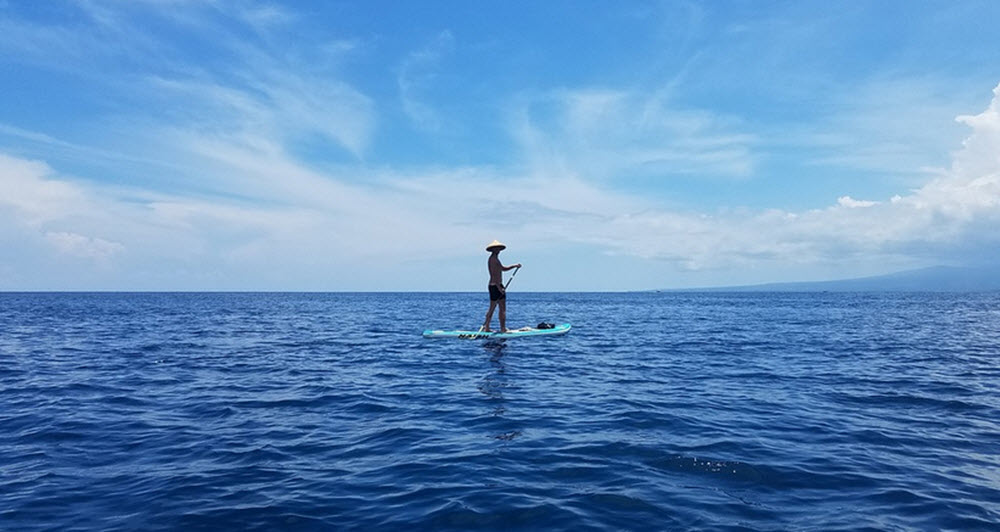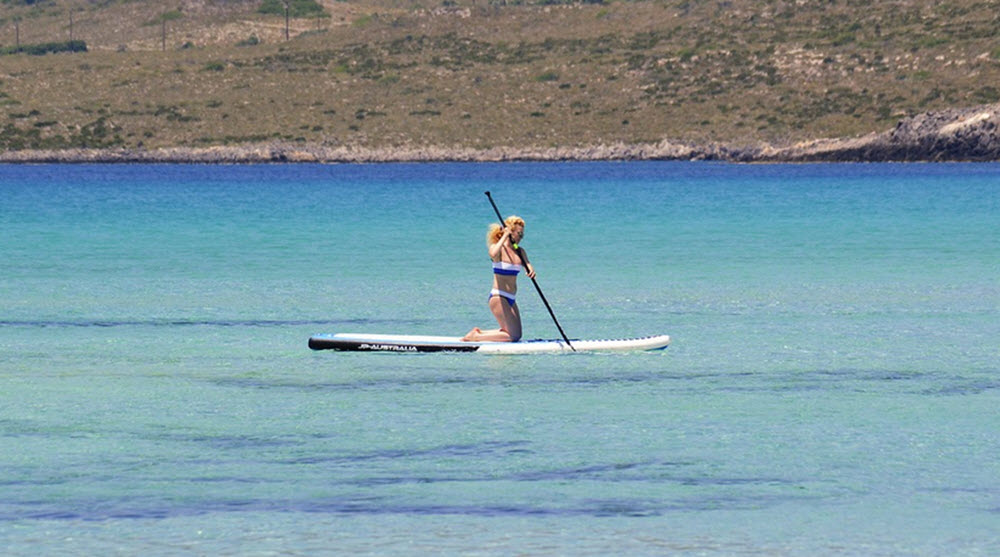Contents
Stand up paddle boarding (SUP) is when you stand up on a floating board and propel yourself using a paddle. This is something that humans have been doing since pre-historic times, as a mode of transportation, but the hobby as we know it today was popularised by parts of the (wave) surfing community in Hawaii in the 20th century.

With traditional wave surfing, you must have access to suitable waves. With stand-up paddle boarding, you make your own propulsion using a paddle (or pole). It can, therefore, be carried out on flat waters, including lakes, rivers, canals and calm parts of the ocean. Skilled participants can paddleboard in more challenging conditions, such as ocean swells and river rapids (the latter is known as whitewater SUP).
SUP is a hobby in itself, but it is also frequently combined with other pastimes, such as bird watching, sightseeing, or general outdoor recreation. Paddleboard yoga is an offshoot where yoga is practiced on the board. There is also paddleboard pilates.
How to paddle
The paddle is held with both hands, using a wide grip.
Keep the blade tilted away from your body, as this makes the paddling more efficient and you can move faster through the water.
Insert the paddle gently into the water in front of your feet, pull it backward through the water, and lift it back up from the water. Move it forward again and repeat.
What size paddle do I need?
Generally speaking, it’s a good idea to get a paddle that is roughly 6 inches (15 cm) taller than you. People who participate in racing events tend to have both longer paddles and longer boards, with the paddles being 10 inches (25 cm) longer than the racer.
What’s the difference between SUP and other types of paddleboarding?
SUP denotes a type of paddleboarding where the participant is standing up erect on the board. There are other types of paddleboarding where you don’t stand up, e.g. where the participant kneels on the board or sits down (sometimes with feet and lower legs in the water). It is also possible to lay down on the board and paddle with your hands and arms instead of using a paddle or pole.

The board
SUP boards are usually longer than 9 feet (2.7 meters), and some are even longer than 12 feet (3.6 meters).
There is often one or three fins in the stern (similar to the fins on a surfboard).
Materials
- Most SUP boards are based on a glass-reinforced plastic construction, where a core of polyurethane or expanded polystyrene is treated with polyester or epoxy resin.
- More unusually, the board can be a hollow wood construction protected by epoxy resin.
- Extra short high-performance carbon fiberboards, sometimes as short as 7 feet, are available in specialist shops. They are a common sight in competitive settings, as shorter boards are more easily maneuvered.
- High-quality race boards for competitions are usually made from either carbon fiber or fiberglass. They tend to be extra long, sometimes up towards 14 feet.
- Inflatable boards have become available fairly recently. They are convenient when you need to travel with your board.
